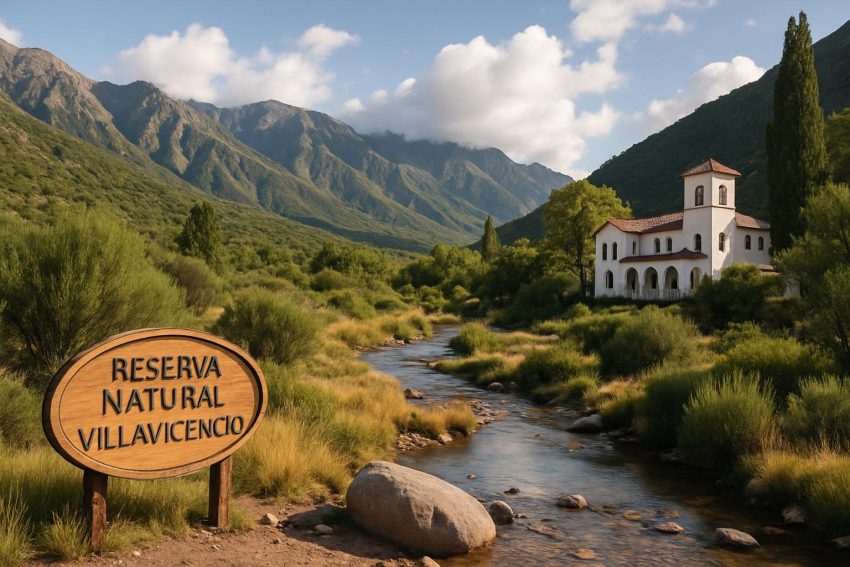Introduction to Reserva Natural Villavicencio
Reserva Natural Villavicencio is a distinguished natural reserve near the city of Mendoza in Argentina. Encompassing an area of over 62,000 hectares, it provides an exceptional amalgamation of biodiversity, scenic landscapes, and historical prominence. This reserve is a haven for a wide variety of plant and animal species, drawing researchers, tourists, and nature aficionados from various parts of the globe. Situated at the base of the Andes Mountains, it boasts not only natural beauty but also cultural and historical elements that make it an exceptional destination.
Geographical Features
The location of Reserva Natural Villavicencio in the foothills of the Andes contributes to its remarkable geographical diversity. The landscape is characterized by valleys, rolling hills, and impressive rock formations that have been shaped by natural processes over millennia. These formations and terrains create a distinct ecosystem that supports an extensive collection of plant and animal life. The differences in elevation throughout the reserve result in multiple microclimates, each playing a crucial role in sustaining the ecological equilibrium of the area.
Flora and Fauna
The plant life within Reserva Natural Villavicencio is highly varied, ranging from hardy cacti to native grasses and resilient shrubs. This diverse flora creates habitats that support a wide range of fauna. The mammal population includes species such as the Guanaco and various fox species, while the skies are patrolled by birds like the majestic Andean condor. Bird watchers find the reserve particularly enticing due to its rich avian diversity, with numerous species frequently observed in their natural habitats. This varied wildlife makes the reserve a living laboratory for scientists and an exciting environment for nature lovers.
Cultural and Historical Significance
Beyond its natural splendor, Reserva Natural Villavicencio holds considerable historical importance. Historically, the area served as a critical route for indigenous Andean communities and later as a pathway during Spanish colonization. One of the most significant historical landmarks is the historic thermal spa known as Hotel Villavicencio. The remains of this once-popular hotel offer a glimpse into the area’s bygone era as a sought-after spa destination. Exploring these ruins provides visitors a deeper appreciation of the region’s historical and cultural journey, enhancing their overall understanding of the area’s heritage.
Conservation Efforts
The preservation of Reserva Natural Villavicencio’s unique ecosystem and rich cultural history is a major priority. Conservation efforts are continuously undertaken to protect its distinctive habitats and cultural assets. This includes ongoing scientific research, diligent wildlife monitoring, and strategic habitat restoration projects designed to maintain ecological integrity. The reserve’s management works collaboratively with environmental organizations to ensure the implementation of sustainable practices. Furthermore, these efforts are aimed at raising awareness among visitors, promoting the importance of conservation as part of their experience at the reserve.
Visitor Information
Open throughout the year, Reserva Natural Villavicencio welcomes visitors with a range of activities that highlight its natural and historical marvels. Visitors can engage in hiking, bird watching, and guided excursions led by knowledgeable guides eager to share insights into the area’s flora, fauna, and history. The visitor center is stocked with educational resources, providing valuable information on the different trails and local wildlife. Given that conditions and accessibility can fluctuate based on seasonal changes, potential visitors are advised to check the current access protocols and opening times before planning their trip.
For more detailed planning or updates, potential visitors can explore the official Reserva Natural Villavicencio website.
Conclusion
Reserva Natural Villavicencio is an extraordinary venue that offers visitors an opportunity to immerse themselves in Argentina’s natural allure and historical tapestry. Through a strong emphasis on conservation and education, the reserve not only serves as a sanctuary for diverse species and habitats but also acts as a guardian of Argentina’s rich cultural and natural heritage. By visiting, individuals support ongoing conservation efforts and partake in the protection and appreciation of this unique and invaluable environment, ensuring its survival for future generations to cherish and learn from.

